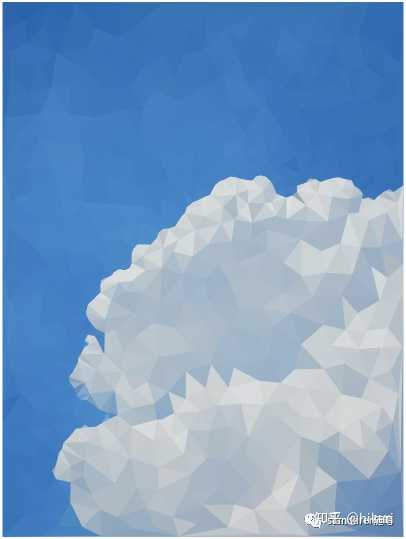有哪些用 MATLAB 绘制的绝美图案?
14 个回答
MATLAB在复杂矩阵数据显示有着得天独厚的优势,有些人老说MATLAB绘图土、不好看,于是俺开发了各种MATLAB绘图工具,争取让MATLAB也能绘制出美观的图片:
以下给出绘图效果以及代码在知乎和公众号的链接:
弦图


双向弦图


分层聚类分析图:树状图+热图


树状图+环形热图


分组环形热图


折线图+误差棒+柱状图+散点抖动+灰色背景+图片叠加

韦恩图


环形树状图


另一种弦图



矩形树状图


花里胡哨k线图



网络关系可视化


阴影柱状图


环形堆叠柱状图


雷达图


相关系数矩阵图



双变量及三变量映射图表




三元相映射


配对箱线图


带竖线散点和密度图




散点密度图


矩阵图


地图绘制




聚类相关



有趣绘图
玫瑰花及玫瑰花球


水晶爱心


山水画


圣诞树

图片三角风格化





绕线画


曼陀罗图形



140字符代码大赛




技巧类
减少白边


自动生成代码

炫酷背景




漫画风格




ggtheme风格修饰




小提琴图





箭头坐标轴


截断坐标轴

tiledlayout使用




离谱技巧





正常绘图技巧



懒得找链接的图
公众号slandarer随笔 都有,请自行前往查看:













谈不上绝美图案,只是一些绘图案例;
先睹为快







- 二维曲线图
- 二维散点图
- 二维渐变色图
- 二维条形图
- 二维填充图
- 多 Y 轴图
- 二维场图
- 带箭头曲线图
- 三维曲线图
- 三维散点图
- 伪彩图
- 裁剪伪彩图
- 等高线图
- 等高线填充图
- 矢量场图
- 伪彩图+投影图
- 条形分布图
- 热图
- 分子模型图
- 分形图
- 曲线斜线填充
- 曲面贴图
- 自定义颜色图
- gif 动态图
- 方程曲线图
- 极坐标图
- 不相交随机圆
- BP 神经网络图
- 小圆构成的圆环
- 棋盘格
二维曲线
二维曲线算是最最常见的一种曲线了,它能反应两个变量的因果关系;
clear;clc;close all;
x = linspace(1, 200, 100);
y1 = log(x) + 1;
y2 = log(x) + 2;
figure;
plot(x, y1);
hold on
plot(x, y2, 'LineWidth', 2);
hold off
legend('y1', 'y2');
调整线的粗细,给人感觉就不一样;
或者说这个颜色可能你觉得不好看,查阅帮助文档里给的的标准颜色也都不喜欢;

没关系,我整理了 28 种个人觉得比较好看的颜色,自行做一下颜色搭配,一般够用了;
figure;
plot(x, y1, 'LineWidth', 2, 'Color', [0.21, 0.21, 0.67]);
hold on
plot(x, y2, 'LineWidth', 2, 'Color', [0.99, 0.49, 0.00]);
hold off
legend('y1', 'y2');
二维散点图
常用来比较理论数据和实验数据的趋势关系;
figure;
y3 = y1 + rand(1, 100) - 0.5;
plot(x, y1, 'LineWidth', 2, 'Color', [0.21, 0.21, 0.67]);
hold on
% 设置数据点的形状、数据点的填充颜色、数据点的轮廓颜色
plot(x, y3, 'o', 'LineWidth', 2, 'Color', [0.46, 0.63, 0.90], 'MarkerFaceColor', [0.35, 0.90, 0.89], 'MarkerEdgeColor', [0.18, 0.62, 0.17]);
hold off
二维渐变色图
用不同的颜色、数据点大小表征不同数值,更加直观;
更详细的案例分析:
% 先自己做一个 colormap
c_map = [0.00, 0.36, 0.67
0.68, 0.42, 0.89
0.44, 0.62, 0.98
0.10, 0.67, 0.59
0.99, 0.57, 0.59
0.28, 0.55, 0.86
0.96, 0.62, 0.24
0.30, 0.90, 0.56
0.12, 0.46, 0.71
0.46, 0.63, 0.90
0.96, 0.37, 0.40
0.14, 0.76, 0.71
0.99, 0.50, 0.02
0.00, 0.57, 0.76
0.35, 0.90, 0.89
0.17, 0.62, 0.47
0.21, 0.21, 0.67
0.99, 0.49, 0.00
0.98, 0.74, 0.44
0.97, 0.60, 0.58
0.18, 0.62, 0.17
0.68, 0.87, 0.53
0.12, 0.46, 0.70
0.65, 0.79, 0.89
0.95, 0.99, 0.69
0.74, 0.92, 0.68
0.37, 0.81, 0.72
0.01, 0.72, 0.77];
scatter(x, y3, x, x, 'filled');
colormap(c_map);
figure;
fill([x, NaN], [y2, NaN], [x, NaN], 'EdgeColor', 'interp', 'LineWidth', 2);
条形图
正常条形图没啥好说的,这里演示绘制带有误差线的柱状图:
figure;
m = 5;
n = 3;
x = 1:m;
y = rand(m, n) + 2;
% 误差限
neg = rand(m, n);
pos = rand(m, n);
% 绘制柱状图
h = bar(x, y);
% 设置三个系列颜色
h(1, 1).FaceColor = [0.00, 0.36, 0.67];
h(1, 2).FaceColor = [0.68, 0.42, 0.89];
h(1, 3).FaceColor = [0.44, 0.62, 0.98];
% 单独设置第二个系列第二个柱子颜色
h(1, 2).FaceColor = 'flat';
h(1, 2).CData(2,:) = [0.21, 0.21, 0.67];
% 获取误差线 x 值
xx = zeros(m, n);
for i = 1 : n
xx(:, i) = h(1, i).XEndPoints';
% 绘制误差线
hold on
errorbar(xx, y, neg, pos, 'LineStyle', 'none', 'Color', 'm', 'LineWidth', 1.5);
hold off
% 绘制图例
legend({'A1', 'A2', 'A3'});
% 设置 x 轴标签
set(gca, 'XTickLabel', {'label1', 'label2', 'label3', 'label4', 'label5'});
填充图
x = 0.4:0.1:2*pi;
y1 = sin(2*x);
y2 = sin(x);
% 确定 y1 和 y2 的上下边界
maxY = max([y1; y2]);
minY = min([y1; y2]);
% 确定填充多边形,按照顺时针方向来确定点
% fliplr 实现左右翻转
xFill = [x, fliplr(x)];
yFill = [maxY, fliplr(minY)];
figure
fill(xFill, yFill, [0.21, 0.21, 0.67]);
hold on
% 绘制轮廓线
plot(x, y1, 'k', 'LineWidth', 2)
plot(x, y2, 'k', 'LineWidth', 2)
hold off
% 函数交叉区域填充
figure;
% 这是三个方程
g1 = @(x,y) 1 - x.^2.*y/20;
g2 = @(x, y) 1 - (x+y-5).^2/30 - (x-y-12).^2/120;
g3 = @(x, y) 1 - 80./(x.^2 + 8*y + 5);
% 把他们的图像画出来
h1 = fimplicit(g1, [0, 10], 'LineWidth', 2);
hold on
h2 = fimplicit(g2, [0, 10], 'LineWidth', 2);
h3 = fimplicit(g3, [0, 10], 'LineWidth', 2);
legend('g1', 'g2', 'g3');
% 问题来了,这个 y 值怎么确定
x1 = h1.XData;
y1 = h1.YData;
x2 = h2.XData;
y2 = h2.YData;
x3 = h3.XData;
y3 = h3.YData;
% 发现 x1, x2 是从大到小的,逆序搞一下
x1 = fliplr(x1);
x2 = fliplr(x2);
y1 = fliplr(y1);
y2 = fliplr(y2);
% 接下来,确定相交区域,主要看这三个关键点:g1-g2, g1-g3, g2-g3
% 数据长度不一样,难搞了,借助【数据提示】功能吧
pt1 = [3.11069, 2.06667];
pt2 = [8.53623, 0.266667];
pt3 = [7.7847, 1.8];
% 确定三个范围
idx1 = find(x1 >= pt1(1) & x1 < pt2(1));
idx2 = find(x2 >= pt1(1) & x2 < pt3(1));
idx3 = find(x3 >= pt3(1) & x3 < pt2(1));
x1 = x1(idx1);
x2 = x2(idx2);
x3 = x3(idx3);
y1 = y1(idx1);
y2 = y2(idx2);
y3 = y3(idx3);
% 一定要是一个闭环
xFill = [x1, fliplr(x3), fliplr(x2)];
yFill = [y1, fliplr(y3), fliplr(y2)];
fill(xFill, yFill, [0.21, 0.21, 0.67]);
hold off
多 Y 轴图
figure;
load('accidents.mat','hwydata')
ind = 1:51;
drivers = hwydata(:,5);
yyaxis left
scatter(ind, drivers, 'LineWidth', 2);
title('Highway Data');
xlabel('States');
ylabel('Licensed Drivers (thousands)');
pop = hwydata(:,7);
yyaxis right
scatter(ind, pop, 'LineWidth', 2);
ylabel('Vehicle Miles Traveled (millions)');
figure;
x = linspace(0,10);
y1 = 2*sin(3*x);
y2 = sin(3*x).*exp(0.5*x);
%% 三个纵坐标演示,更多纵坐标可以按照此方法类推
y3 = 10*cos(3*x);
% 控制 aies 的大小和位置,注意是相对于figure的,范围为[0, 1]
% 三条线绘制到一起,注意数据都标准化到 y1 范围
maxY1 = max(y1);
maxY2 = max(y2);
maxY3 = max(y3);
minY1 = min(y1);
minY2 = min(y2);
minY3 = min(y3);
newY2 = (y2 - minY2)/(maxY2 - minY2); % 归一化
newY2 = newY2*(maxY1 - minY1) + minY1; % 反归一化
newY3 = (y3 - minY3)/(maxY3 - minY3);
newY3 = newY3*(maxY1 - minY1) + minY1;
axes('position', [0.1 0.1 0.5 0.5]);
plot(x, y1, 'k', x, newY2, 'r', x, newY3, 'ob--')
ylabel('line1');
% 绘制另外两个空的坐标轴
h2 = axes('position', [0.65 0.1 0.005 0.5]);
% 重复绘制,曲线颜色用白色,和figure背景色一致,看不出来即可
plot(x, y2, 'w')
% 颜色,位置,曲线标签
set(h2, 'ycolor', 'r', 'yaxislocation', 'right', 'xtick', [])
% 不知道为啥2018B版本边界显示不清楚,所以画一条线
hold on
limX2 = get(h2, 'Xlim');
limY2 = get(h2, 'Ylim');
plot([limX2(2), limX2(2)], limY2, 'r');
hold off
% 取消边框
box off
ylabel('line2');
h3 = axes('position', [0.75 0.1 0.005 0.5]);
plot(x, y3, 'w')
set(h3, 'ycolor', 'b', 'yaxislocation', 'right', 'xtick', [])
hold on
limX3 = get(h3, 'Xlim');
limY3 = get(h3, 'Ylim');
plot([limX3(2), limX3(2)], limY3, 'b');
hold off
box off
ylabel('line3');
% 取消坐标轴的颜色,和figure统一
% set(h1, 'color','none')
% set(h2, 'color','none')
% set(h3, 'color','none')
% figure背景设置成白色
set(gcf,'color','white'); 
二维场图
% 直接把 streamline 函数的帮助文档 demo 拷贝过来
[x, y] = meshgrid(0:0.1:1, 0:0.1:1);
u = x;
v = -y;
startx = 0.1:0.1:0.9;
starty = ones(size(startx));
% 需要获取所有流线的属性
figure;
quiver(x, y, u, v);
streamline(x, y, u, v, startx, starty);
带箭头曲线
% 直接把 streamline 函数的帮助文档 demo 拷贝过来
figure;
[x, y] = meshgrid(0:0.1:1, 0:0.1:1);
u = x;
v = -y;
startx = 0.1:0.1:0.9;
starty = ones(size(startx));
% 需要获取所有流线的属性
lines = streamline(x, y, u, v, startx, starty);
% 下面开始画箭头,涉及到坐标的转换
% 获取 Axes 位置
posAxes = get(gca, 'Position');
posX = posAxes(1);
posY = posAxes(2);
width = posAxes(3);
height = posAxes(4);
% 获取 Axes 范围
limX = get(gca, 'Xlim');
limY = get(gca, 'Ylim');
minX = limX(1);
maxX = limX(2);
minY = limY(1);
maxY = limY(2);
% 遍历,逐条流线加箭头
for i = 1 : length(lines)
% 获取每条流线的数据
xData = lines(i).XData;
yData = lines(i).YData;
% 这里取的是最后两个点,一定要是相邻的两个点用来确定箭头方向
x0 = xData(end-1 : end);
y0 = yData(end-1 : end);
% 转换坐标到相对于figure的坐标
xNew = posX + (x0 - minX) / (maxX - minX) * width;
yNew = posY + (y0 - minY) / (maxY - minY) * height;
% 画箭头
hold on
annotation('arrow', xNew, yNew, 'color', 'b');
hold off
title('带箭头的流线图');
三维曲线图
figure;
t = 0:pi/20:10*pi;
xt = sin(t);
yt = cos(t);
plot3(xt, yt, t, '-o', 'Color', 'b', 'MarkerSize', 10, 'MarkerFaceColor', '#D9FFFF');
figure;
x = -20:10:20;
y = 0:100;
% 随便生成的 5 组数据,也就是目标图上的 5 条曲线数据
z = zeros(5, 101);
z(1, 1:10:end) = linspace(1, 10, 11);
z(2, 1:10:end) = linspace(1, 20, 11);
z(3, 1:10:end) = linspace(1, 5, 11);
z(4, 5:10:end) = linspace(1, 10, 10);
z(5, 80:2:end) = linspace(1, 5, 11);
for i = 1:5
% x 方向每条曲线都是一个值,重复 y 的长度这么多次
xx = x(i)*ones(1, 101);
% z 方向的值,每次取一条
zz = z(i, :);
% plot3 在 xyz 空间绘制曲线,保证 x y z 长度一致即可
plot3(xx, y, zz, 'LineWidth', 2);
hold on
hold off
legend('line1', 'line2', 'line3', 'line4', 'line5');
% 如果把渐变曲线和三维曲线结合起来
figure;
x = linspace(0, 2*pi, 50);
y = sin(x);
fill3([ones(size(x)), NaN], [x, NaN], [y, NaN], [x NaN], 'EdgeColor', 'interp', 'LineWidth', 2)
hold on
for i = 2 : 5
if mod(i, 2) == 0
y = sin(2*x);
fill3([i * ones(size(x)), NaN], [x, NaN], [y, NaN], [x NaN], 'EdgeColor', 'interp', 'LineWidth', 2)
y = sin(10*x);
fill3([i * ones(size(x)), NaN], [x, NaN], [y, NaN], [x NaN], 'EdgeColor', 'interp', 'LineWidth', 2)
hold off
三维散点图
figure;
[X,Y,Z] = sphere(16);
x = [0.5*X(:); 0.75*X(:); X(:)];
y = [0.5*Y(:); 0.75*Y(:); Y(:)];
z = [0.5*Z(:); 0.75*Z(:); Z(:)];
S = repmat([70, 50, 20],numel(X), 1);
C = repmat([1, 2, 3], numel(X), 1);
s = S(:);
c = C(:);
h = scatter3(x, y, z, s, c);
h.MarkerFaceColor = [0 0.5 0.5];
x = linspace(1, 200, 100);
y1 = log(x) + 1;
y2 = log(x) + 2;
y3 = y1 + rand(1, 100) - 0.5;
figure;
scatter3(x, y2, y3, x, x, 'filled');
colormap(c_map);
三维伪彩图
[x, y, z] = peaks(30);
figure;
plot1 = subplot(1,2,1);
surf(x, y, z);
% 获取第一幅图的 colormap,默认为 parula
cMap = colormap;
plot2 = subplot(1,2,2);
surf(x, y, z);
% 下面设置的是第二幅图的颜色,默认是整个 figure 的
colormap(hot);
% 设置第一幅图颜色显示为 parula
set(plot1, 'Colormap', cMap);
% 一个坐标轴
figure;
h1 = surf(x, y, z);
freezeColors;
hold on
h2 = surf(x, y, z + 5);
hold off
colormap(hot);
裁剪伪彩图
figure;
n = 300;
[x, y, z] = peaks(n);
subplot(2, 2, [1,3])
surf(x, y, z);
shading interp
view(0, 90)
for i = 1:n
for j = 1:n
if x(i, j)^2 + 2 * y(i, j)^2 > 6 && 2 * x(i, j)^2 + y(i, j)^2 < 6
z(i, j) = NaN;
subplot(2, 2, 2)
surf(x, y, z);
shading interp
view(0, 90)
subplot(2, 2, 4)
surf(x, y, z);
shading interp
等高线图
figure;
[X, Y, Z] = peaks;
subplot(2, 2, 1);
contour(X, Y, Z, 20, 'LineWidth', 2);
subplot(2, 2, 2);
contour(X, Y, Z, '--', 'LineWidth', 2)
subplot(2, 2, 3);
v = [1, 1];
contour(X, Y, Z, v, 'LineWidth', 2);
x = -2:0.2:2;
y = -2:0.2:3;
[X, Y] = meshgrid(x, y);
Z = X.*exp(-X.^2-Y.^2);
subplot(2, 2, 4);
contour(X, Y, Z, 'ShowText','on', 'LineWidth', 2);
figure('Position', [0, 0, 900, 400]);
subplot(1, 3, 1);
[X, Y, Z] = sphere(50);
contour3(X, Y, Z, 'LineWidth', 2);
[X, Y] = meshgrid(-2:0.25:2);
Z = X.*exp(-X.^2-Y.^2);
subplot(1, 3, 2);
contour3(X, Y, Z, [-0.2 -0.1 0.1 0.2], 'ShowText', 'on', 'LineWidth', 2)
[X, Y, Z] = peaks;
subplot(1, 3, 3);
contour3(X, Y, Z, [2 2], 'LineWidth', 2);
等高线填充图
figure;
subplot(2, 2, 1);
[X, Y, Z] = peaks(50);
contourf(X, Y, Z);
subplot(2, 2, 2);
contourf(X, Y, Z,'--');
% 限定范围
subplot(2, 2, 3);
contourf(X, Y, Z, [2 3], 'ShowText', 'on');
subplot(2, 2, 4);
contourf(X, Y, Z,[2 2]);
三维矢量场图
figure;
[X, Y, Z] = peaks(30);
% 矢量场,曲面法线
[U, V, W] = surfnorm(X, Y, Z);
% 箭头长度、颜色
quiver3(X, Y, Z, U, V, W, 0.5, 'r');
hold on
surf(X,Y,Z);
xlim([-3, 3]);
ylim([-3, 3.2]);
shading interp
hold off
view(0, 90);
伪彩图+投影图
clear;clc;close all;
x = linspace(-3, 3, 30);
y = linspace(-4, 4, 40);
[X, Y] = meshgrid(x, y);
Z = peaks(X, Y);
Z(5:10, 15:20) = 0;
z1 = max(Z);
z2 = max(Z, [], 2);
figure;
subplot(3, 3, [1, 2]);
plot(x, z1, 'LineWidth', 2);
subplot(3, 3, [6, 9]);
plot(z2, y, 'LineWidth', 2);
subplot(3, 3, [4, 5, 7, 8]);
surf(x, y, Z);
xlim([-3, 3]);
ylim([-4, 4]);
view(0, 90);
shading interp
figure;
% 3*3 布局
tiledlayout(3, 3, 'TileSpacing', 'Compact');
% 占据 1*2,也就是 1 2
nexttile([1, 2]);
plot(x, z1, 'LineWidth', 2);
% 从第 6 个开始,占据 2*1,也就是 6 和 9
nexttile(6, [2, 1]);
plot(z2, y, 'LineWidth', 2);
% 从第 4 个开始,占据 2*2,也就是 4 5 7 8
nexttile(4, [2, 2]);
surf(x, y, Z);
xlim([-3, 3]);
ylim([-4, 4]);
view(0, 90);
shading interp
条形分布图
clear;clc;
x = linspace(-10, 10, 100);
y = gauss(100, 5) ;
figure;
% 设置边缘颜色和宽度
bar(x, y, 'EdgeColor', 'none', 'BarWidth', 1);
热图
clear;clc;
z = rand(50);
z(z >= 0.0 & z < 0.6) = 0.5;
z(z >= 0.6 & z < 0.8) = 0.7;
z(z >= 0.8 & z <= 1) = 0.9;
for i = 1:30
z(randi(50, 1, 1) : end, i) = nan;
for i = 31:50
z(30 + randi(20, 1, 1) : end, i) = nan;
z(20:25, 40:45) = nan;
figure;
% ax = surf(z);
ax = pcolor(z);
view(0, 90);
ax.EdgeColor = [1 1 1];
axis off
figure;
for i = 1:50
for j = 1:50
if ~isnan(z(i, j))
x = [i - 1, i, i, i - 1];
y = [j - 1, j - 1, j, j];
c1 = 'w';
c2 = 'w';
if z(i, j) >= 0.1
c1 = 'black';
c2 = [0.65, 0.78, 0.56];
if z(i, j) >= 0.6
c2 = [0.98, 0.46, 0.23];
if z(i, j) >= 0.8
c2 = [0.99, 0.02, 0.02];
patch(x, y, c2, 'EdgeColor', c1);
axis off
分子模型图
clear;clc;
% 球面的坐标信息,为了看起来平滑一点,给到 100
[x, y, z] = sphere(100);
% C 大小
C = 10;
% H 大小
H = 5;
figure;
surf(C*x, C*y, C*z, 'FaceColor', 'red', 'EdgeColor', 'none')
hold on
% 四个小球,都偏离一点位置,准确的位置需要计算,这里演示一个大概位置
surf(H*x, H*y, H*z + 10, 'FaceColor', 'blue', 'EdgeColor', 'none');
surf(H*x + 10, H*y, H*z - 3, 'FaceColor', 'blue', 'EdgeColor', 'none');
surf(H*x - 4, H*y - 10, H*z - 3, 'FaceColor', 'blue', 'EdgeColor', 'none');
surf(H*x - 4, H*y + 10, H*z - 3, 'FaceColor', 'blue', 'EdgeColor', 'none');
% 坐标轴设置
axis equal off
% 光源,看起来更有立体感
light
lighting gouraud
分形图
clear;clc;
n = 1000;
m = 1000;
f = @(z) z^8 - 1;
df = @(z) 8*z^7;
[X, Y] = meshgrid(linspace(-2, 2, n), linspace(-2, 2, m));
A = nan(n, m);
for i = 1:n
for j = 1:m
z0 = X(i, j) + 1i*Y(i, j);
% Newton-Raphson
z = z0;
ite = 0;
fz = f(z);
while abs(fz) > 1e-6 && ite < 20
z = z - f(z)/df(z);
fz = f(z);
ite = ite + 1;
A(i, j) = ite;
figure;
pcolor(X, Y, A);
% hold on
% plot([1, -1, 0, 0], [0, 0, 1, -1], '.k', 'MarkerSize', 20);
% hold off
shading flat
axis tight manual 
% xlim([-0.5, 0]);
% ylim([0.5, 1]);
% 保存成视频
% set(gca, 'nextplot', 'replacechildren');
% v = VideoWriter('NRfractal.avi');
% open(v);
% for k = 1:20
% pcolor(X, Y, A);
% shading flat
% xlim([-2*(1-k/25), 2*(1-k/25)]);
% ylim([-2*(1-k/25), 2*(1-k/25)]);
% frame = getframe(gcf);
% writeVideo(v, frame);
% end
% (-0.19, 0.6557)
% (-0.1, 0.651)
% zx = zx*zx - zy*zy + cx
% zy = 2*zx*zy+cy
c = - 0.1 + 1i*0.651;
radius = 32;
[X, Y] = meshgrid(linspace(-1.5, 1.5, n), linspace(-1.5, 1.5, m));
A = nan(n, m);
for i = 1:n
for j = 1:m
z = X(i, j) + 1i*Y(i, j);
% Julia
for ite = 1:1000
z = (z*z + c) ;
if abs(z) > radius
break;
A(i, j) = ite;
figure;
pcolor(X, Y, A);
shading flat
axis tight manual
曲线斜线填充
曲面贴图
clear;clc;
figure;
% 读取地图文件
image = imread('World.jpg');
% 生成一个球面数据
[x, y, z] = sphere(200);
% 绘制球体
p = surf(x, y, z);
% 去网格线
shading interp;
p.CData = image;
% 纹理贴图
p.FaceColor = "texturemap";
axis equal;
axis off
% 光源,看起来更有立体感
% light
% lighting gouraud
% 光源颜色
handle = light('Color', [1 1 1]);
t = 0;
while t < 100
t = t + 1;
view([t 10]);
lightangle(handle, t, 0);
pause(0.01);
end
自定义颜色图
clear;clc;
N = 500;
z = peaks(N);
% 选择 ROI 以外的不显示
for i = 1:N
for j = 1:N
if sqrt((i - N/2)*(i - N/2) + (j - N/2)*(j - N/2)) > 240
z(i, j) = nan;
% 自定义颜色 大概就是给特定范围值指定颜色
N = 14 * 5;
crange = linspace(-6, 8, N);
cmap = zeros(N, 3);
for i = 1:N
if crange(i) <= 0
cmap(i, :) = [0, 1, 0];
elseif crange(i) <= 3
cmap(i, :) = [0, 0, 1];
elseif crange(i) <= 6
cmap(i, :) = [1, 1, 0];
cmap(i, :) = [1, 0, 0];
figure;
surf(z)
colormap(cmap);
% 去网格
shading interp
view(0, 90);
% 去坐标轴
axis off
gif 动态图
clear; clc;
x = 0:0.01:1;
n = 1:9;
len = length(n);
im = cell(1, len);
% 单独显示每个图
figure;
for idx = 1:len
subplot(3, 3, idx)
plot(x, x.^idx, 'LineWidth',3)
title(['y = x^', num2str(idx)])
% 获取绘制对象
fig = figure(1);
for idx = 1:len
y = x.^idx;
plot(x, y, 'LineWidth', 3)
title(['y = x^', num2str(n(idx))])
% drawnow
% pause(0.1);
frame = getframe(fig);
im{idx} = frame2im(frame);
% 输出文件名
% filename = 'testAnimated.gif';
% for idx = 1:len
% % 制作gif文件,图像必须是index索引图像
% [A, map] = rgb2ind(im{idx}, 256);
% if idx == 1
% imwrite(A, map, filename, 'gif', 'LoopCount', Inf, 'DelayTime', 0.3);
% else
% imwrite(A, map, filename, 'gif', 'WriteMode', 'append', 'DelayTime', 0.3);
% end
% end
方程曲线图
% 二元方程 x^2*cos(y) + x*sinh(y^2) = 0
xy = linspace(-2, 2, 4);
f = @(x, y) x.^2.*cos(y) + x.*sinh(y.^2);
figure
fimplicit(f, [-2, 2]);
极坐标图
figure;
theta = 0:0.01:2*pi;
rho = sin(2*theta).*cos(2*theta);
tiledlayout(1, 2);
nexttile;
polarplot(theta, rho, 'c', 'LineWidth', 2);
nexttile;
rMax = 2*max(rho);
% 这个看不到线,因为只有一个重复的点
polarplot([0, 2*pi], [rMax, rMax]);
hold on
polarplot(theta, rho, 'm', 'LineWidth', 2);
hold off
不相交随机圆
clear;clc;close all;
% 限定范围
width = 10;
height = 10;
% 最多产生的圆的个数
circleNumber = 100;
% 记录每个圆的横坐标、纵坐标、半径
paras = zeros(circleNumber, 3);
num = 0;
hold on
while num < circleNumber
num = num + 1;
% 圆半径小于1或者设定为固定值
r = rand;
% 在范围内随机坐标
xPos = rand*(width-2*r) + r;
yPos = rand*(height-2*r) + r;
% 记录坐标、半径
paras(num,:) = [xPos, yPos, r];
% 判断每个圆的位置是否不相切、不相交
if num > 1
% 新产生的圆和之前产生的所有圆计算距离
xs = paras(1:num - 1, 1);
ys = paras(1:num - 1, 2);
rs = paras(1:num - 1, 3);
dist1 = sqrt((xPos - xs).^2 + (yPos - ys).^2);
dist2 = abs(r + rs);
% 如果相离则绘制当前产生的圆,否则就重新生成一个圆
if all(dist1 > dist2)
rectangle('Position', [xPos-r, yPos-r, 2*r, 2*r], 'Curvature', [1 1]);
axis equal
r = rand;
xPos = rand*(width-2*r) + r;
yPos = rand*(height-2*r) + r;
paras(num,:) = [xPos,yPos,r];
% 防止死循环
temp = 0;
maxTry = 100;
while any(dist1 <= dist2) && temp < maxTry
temp = temp + 1;
dist1 = sqrt((xPos - xs).^2 + (yPos - ys).^2);
dist2 = abs(r + rs);
if all(dist1 > dist2)
rectangle('Position', [xPos-r, yPos-r, 2*r, 2*r], 'Curvature', [1 1]);
axis equal
axis([0 width 0 height])
box on
hold off
BP 神经网络图
figure;
x1 = ones(1, 5);
x2 = 2 * ones(1, 11);
x3 = 3 * ones(1, 8);
y1 = 4:8;
y2 = 1:11;
y3 = 2.5:9.5;
for i = 1:5
for j = 1:11
plot([x1(i), x2(j)], [y1(i), y2(j)], 'k');
hold on
for i = 1:11
for j = 1:8
plot([x2(i), x3(j)], [y2(i), y3(j)], 'k');
scatter(x1, y1, 200, 'k', 'MarkerFaceColor', 'r');
scatter(x2, y2, 200, 'k', 'MarkerFaceColor', 'y');
scatter(x3, y3, 200, 'k', 'MarkerFaceColor', 'k');
plot([1.5, 1.5], [0, 11], 'k--');
plot([2.5, 2.5], [0, 11], 'k--');
hold off
axis off
text(1.5, 11.75, '输入层');
text(2, 11.75, '隐藏层');
text(2.5, 11.75, '输出层');
小圆构成的圆环
clear;clc;
x0 = 0;
y0 = 0;
r1 = 2;
r2 = 1;
theta = 0:pi/50:2*pi;
for i = 1:length(theta)
% 系列小圆的圆心坐标 极坐标方式
x = x0 + r1 * cos(theta(i));
y = y0 + r1 * sin(theta(i));
% 以小圆圆心画圆 极坐标方式
xx = x + r2 * cos(theta);
yy = y + r2 * sin(theta);
plot(xx, yy, 'k');
hold on
hold off
% 限定显示范围
xlim([-3, 3]);
ylim([-3, 3]);
% x y 轴等宽
axis equal
axis tight
棋盘格
figure;
% 生成数据点
[x, y] = meshgrid(30:39);
x = x(:);
y = y(:);
scatter(x, y, 100, 'red');
hold on
% 随机填充几个点
number = 5;
index_x = randi(9, 1, number) + 30;
index_y = randi(9, 1, number) + 30;



